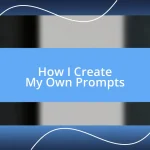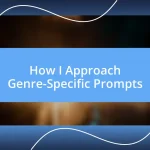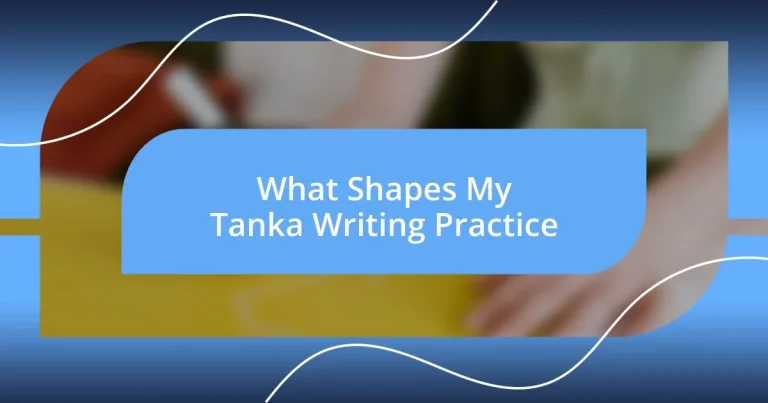Key takeaways:
- Tanka poetry, with its 5-7-5-7-7 structure, emphasizes emotional depth and linguistic precision, encouraging writers to capture fleeting moments and reflections.
- Rooted in Japanese culture since the 7th century, tanka has evolved into a global art form that remains relevant through modern platforms, allowing for diverse expressions and connections.
- Effective tanka writing requires attention to syllable structure, vivid imagery, emotional undertones, and seasonal references, while drawing inspiration from nature, personal experiences, and consistent writing routines.
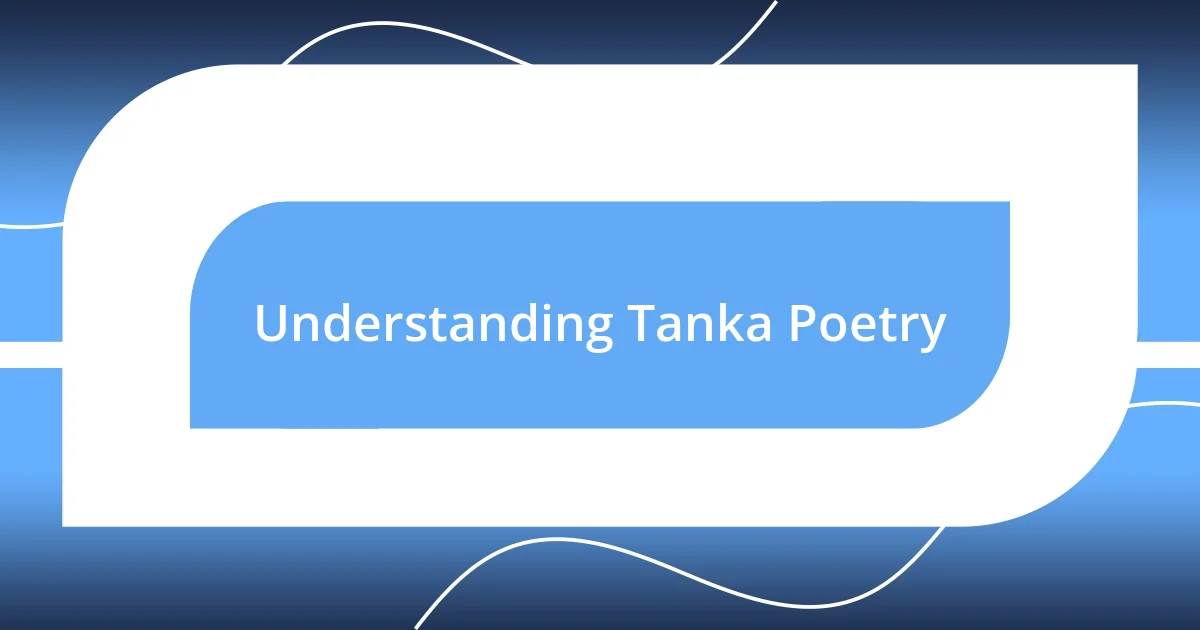
Understanding Tanka Poetry
Tanka poetry, with its five-line structure and 31-syllable count, offers a unique blend of emotional depth and linguistic precision. I remember the first time I encountered a tanka; it was a simple yet profound reflection on nature that resonated deeply with me. Has a poem ever stopped you in your tracks and made you reevaluate your surroundings? That’s the beauty of tanka—it captures fleeting moments in a way that sparks introspection.
The traditional themes of tanka often revolve around nature, seasons, love, and personal reflection, pushing the writer to convey complex emotions in a brief format. When I write a tanka, I find myself diving into specific memories, often recalling a serene moment by the water or a heartfelt conversation under the stars. How often do we take a moment to truly appreciate these instances? Tanka poetry encourages us to pause and savor these experiences.
In crafting tanka, each word must be chosen with care, creating resonance and evoking imagery that lingers long after reading. It’s a delicate balance of brevity and depth that challenges our expressive abilities. I once spent an entire afternoon tweaking just one tanka, striving to find the perfect word that encapsulated my feelings—an experience both frustrating and rewarding. Have you ever felt that tension between what you want to say and the limitations of language? That’s where the magic of tanka truly lies.

Historical Context of Tanka
Tanka has a rich history, rooted deeply in Japanese culture. Emerging in the 7th century, it evolved from earlier forms of poetry like ‘choka.’ I often find myself marveling at how these ancient poets mastered such depth in a compact form. Imagine composing verses that encapsulate an entire season’s essence—how awe-inspiring must that have felt in a time when every word held monumental significance!
The tanka structure, consisting of five lines with a 5-7-5-7-7 syllable pattern, was designed to convey layers of meaning. It’s fascinating to see how this form flourished during the Heian period (794-1185) when court nobles would exchange these poems as part of their social interactions. I reflect on how similar exchanges occur today, with modern poets engaging through platforms like Instagram—just a digital twist on a centuries-old practice, wouldn’t you agree?
Over the centuries, tanka has transcended cultural boundaries, inspiring poets worldwide. I recall sharing some of my tanka in an online workshop with participants from various backgrounds. Each piece brought a unique perspective, reinforcing how tanka can bridge our differences and connect us through feelings and experiences. This adaptability is part of what makes tanka eternally relevant.
| Time Period | Key Characteristics |
|---|---|
| 7th Century | Origins of tanka; influenced by choka. |
| Heian Period (794-1185) | Tanka as a social tool among court nobles; rise in sophistication. |
| Modern Era | Global appreciation; digital platforms foster sharing and connection. |
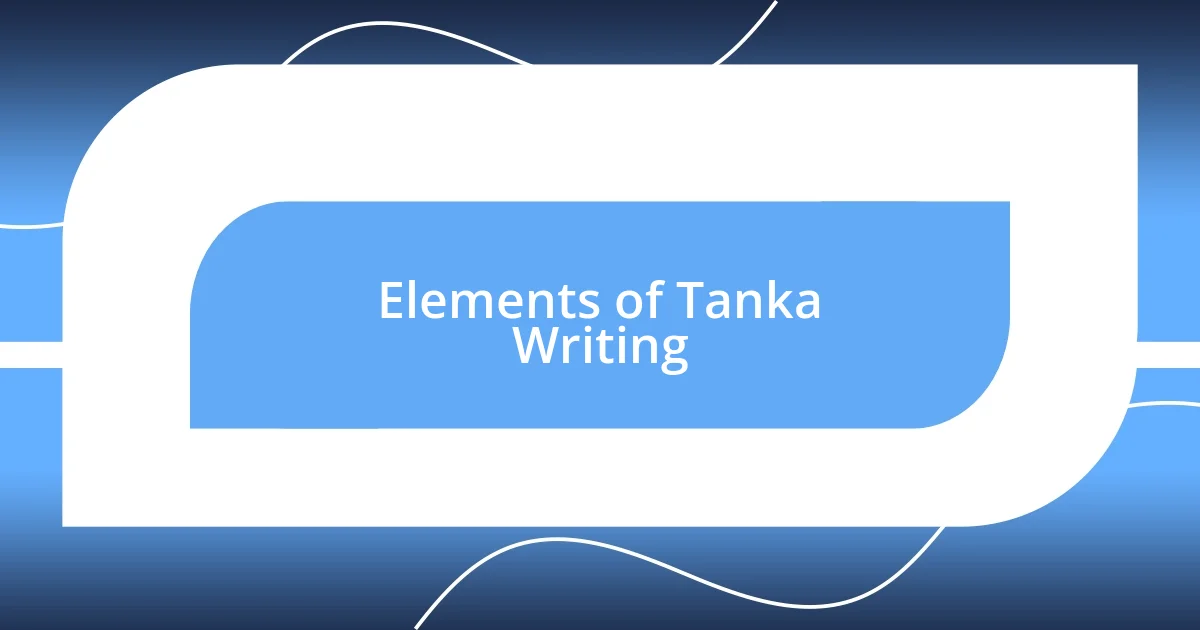
Elements of Tanka Writing
Tanka writing relies on several key elements that shape the overall impact of the poem. Each component plays a significant role in how emotions and imagery are conveyed. Sometimes, when I’m in the midst of crafting a tanka, I feel like a painter blending colors to achieve just the right shade of meaning.
- Syllable Structure: Comprising a unique 5-7-5-7-7 syllable count, it encourages brevity while demanding depth.
- Imagery and Sensory Detail: Tanka relies on vivid visuals and sensory experiences to evoke emotions and create connections with the reader.
- Emotional Undertones: Each poem should resonate with a subtle emotional weight, often reflecting personal reflections or nature’s beauty.
- Seasonal References: These not only ground the poem but also enhance the thematic complexity, allowing for rich interpretations.
In my personal experience, I often find that the subtleties within each tanka can take countless revisions to perfect. I once spent weeks revisiting a particular poem about a snowy evening that kept slipping away from its core emotion. Each revision brought fresh insights, yet it was the simplicity of the final line—just three words—that ultimately tied everything together. Such moments reinforce the idea that sometimes, less truly is more.

Techniques for Effective Tanka
When writing effective tanka, one technique I find invaluable is embracing the art of brevity. Each syllable counts, so I often ask myself, “What can I express in just five words that would evoke a powerful image or emotion?” I remember a tanka I crafted about the fleeting beauty of cherry blossoms. Initially, it overflowed with words, yet it was the concise refinement that transformed it into something beautifully poignant. Cutting out the excess allowed the emotion to shine through more brilliantly.
Imagery is another crucial tool in the tanka toolbox. I aim to paint vivid pictures with my words, inviting readers to experience the moment as I do. This reminds me of a tanka I wrote about a quiet morning at the beach. Instead of simply describing the waves, I focused on the scent of salt in the air and the warmth of the sun on my skin. By engaging the senses, I create a connection with readers that makes them feel part of the scene. You might ask yourself: “How can I use sensory details to invite others into my world?”
Seasonal references play a significant role in enriching tanka, too. Each season carries its own emotional weight, and I often find that tapping into these themes can lead to deeper reflections. Take, for instance, a tanka I penned during autumn, when the crisp air and falling leaves stirred memories of change and nostalgia. It wasn’t just about the season but the emotions it evoked. This connection can enhance the impact of my work, making it resonate more powerfully with readers. How do the seasons inform your own writing?
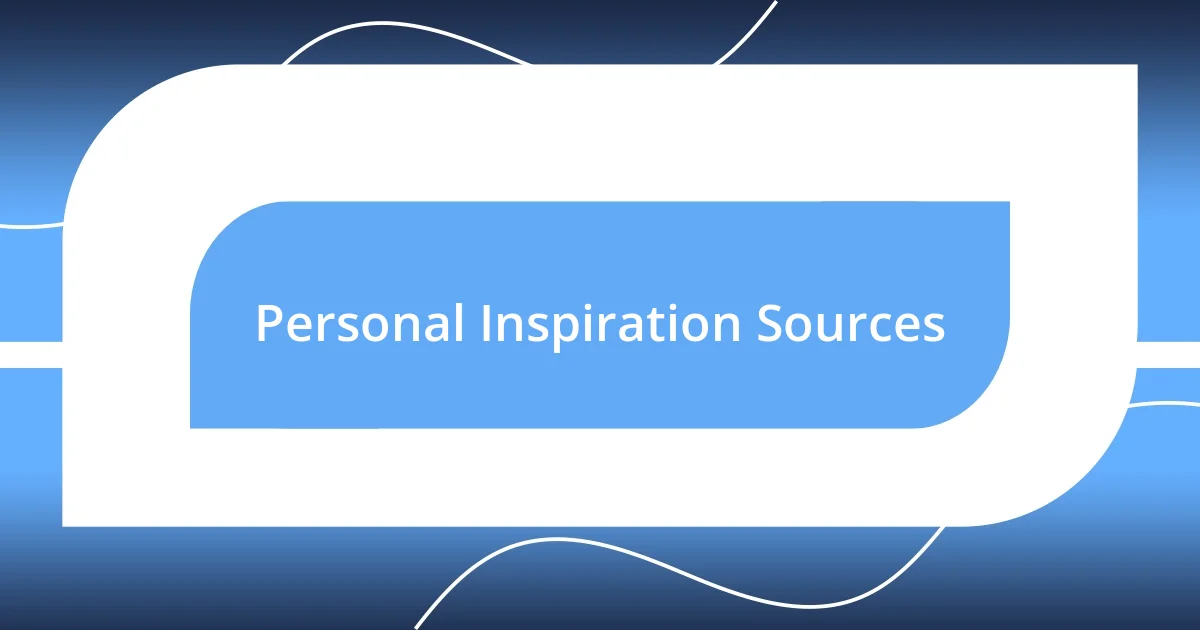
Personal Inspiration Sources
There are countless sources of inspiration that shape my tanka writing. Nature is a primary muse; the delicate flutter of a butterfly or the sound of rustling leaves often evokes a poem in my mind. I remember a walk in the woods, where a gentle breeze carried the scent of pine, and suddenly, the words began to flow like a stream—a reflection of that serene moment.
Personal experiences also deeply influence my tanka. When I reflect on significant life events, the emotions tied to those moments often transform into stanzas. For instance, after a heartfelt conversation with a friend during a rainy afternoon, I found myself compelled to capture the bittersweet essence of that connection. It was as if the rain blended with our laughter to create a tapestry of memories, prompting me to scribble a tanka that resonated with our shared vulnerability.
Sometimes, I draw inspiration from art and literature. A striking painting or a poignant novel can open the door to new ideas. There was a time when I stumbled upon a depiction of a lonely lighthouse, its beam cutting through a dense fog. That image lingered in my mind, pushing me to explore themes of solitude and hope in my writing. Have you ever found something in art that spoke to you so deeply that you felt compelled to write about it?
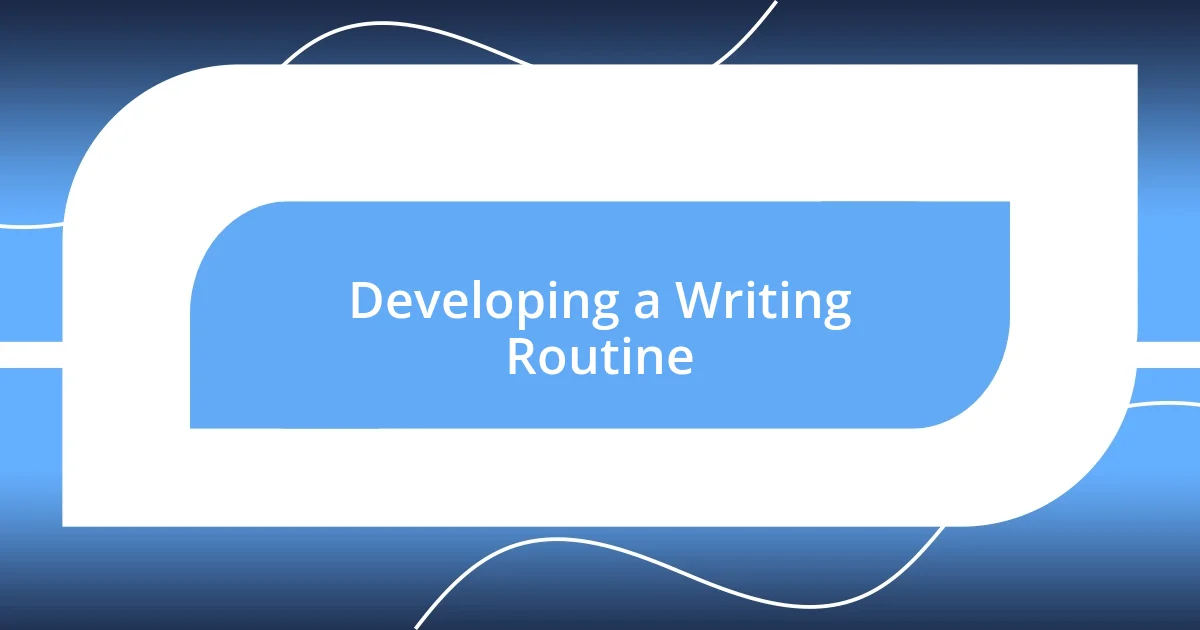
Developing a Writing Routine
Developing a consistent writing routine has been a game-changer for my tanka practice. I’ve learned that setting aside quiet moments each day helps to tune my creative frequency. When I dedicate time early in the morning, I often find that my thoughts flow more freely, as if the world hasn’t yet filled them with noise.
In my experience, keeping a small notebook handy is essential. I’ve found that inspiration can strike at the most unexpected times—a sudden image while sipping coffee or a poignant moment during a mundane errand. Jotting down snippets of these experiences allows me to build a treasure trove of ideas that I can revisit later. Have you ever captured a fleeting thought and later found it blossoming into something beautifully complex?
I’ve also discovered the power of rituals in my writing routine. For me, brewing a cup of chamomile tea before I write signals my mind to shift into creative gear. I remember one particularly chilly evening when that warm cup in my hands set the tone for a tanka about winter’s embrace. Each ritual, whether it’s a warm beverage or soft music, helps me cultivate a space where inspiration thrives. What little habits could enrich your own writing practice?





